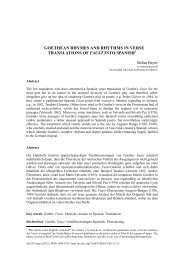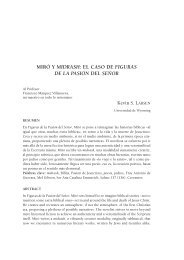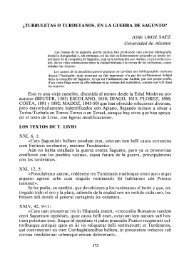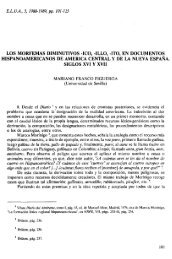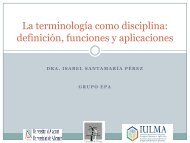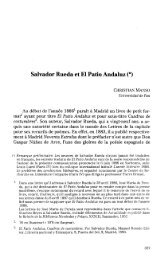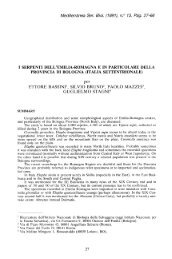ecological effects of marine protected areas empafish project ...
ecological effects of marine protected areas empafish project ...
ecological effects of marine protected areas empafish project ...
You also want an ePaper? Increase the reach of your titles
YUMPU automatically turns print PDFs into web optimized ePapers that Google loves.
EMPAFISH Booklet no. 1 Ecological <strong>effects</strong> <strong>of</strong> Atlanto-Mediterranean MPAs in the EU<br />
mortality <strong>of</strong> P. lividus, the high intensity <strong>of</strong> fishing in un<strong>protected</strong> <strong>areas</strong> would<br />
explain the patterns observed. Additionally, Sala & Zabala (1996) showed that<br />
the population structure <strong>of</strong> this species is determined by fish predation within<br />
the <strong>protected</strong> area <strong>of</strong> the MIMR, while recruitment success determines the<br />
population structure in un<strong>protected</strong> <strong>areas</strong>.<br />
� Fish movement (including spillover)<br />
As in the other MPAs selected as case studies within the CE <strong>project</strong> BIOMEX<br />
(http://biomex.univ-perp.fr), studies have been undertaken to test the<br />
hypothesis that spillover from MPAs to neighbouring <strong>areas</strong> should have as a<br />
consequence the observation <strong>of</strong> gradients <strong>of</strong> fish biomass across boundaries.<br />
In Medes, this hypothesis is going to be tested by using UVC, baited video,<br />
and collection <strong>of</strong> fish eggs and larvae by plankton nets as sampling<br />
techniques, following a sampling design including several sites inside the MPA<br />
plus other sites outside the MPA (to the North). Results <strong>of</strong> these studies are<br />
being analysed at present.<br />
� Other biological (e.g. density-dependent) <strong>effects</strong><br />
Natural mortality (M) rates were determined for five common species (Coris<br />
julis, Diplodus annularis, Diplodus sargus, Serranus cabrilla and Symphodus<br />
roissali) by UVC in the MIMR (Macpherson et al. 2000). This study showed low<br />
variability <strong>of</strong> M at seasonal and interannual scales. The mortality rates were<br />
not affected by a “reserve effect”, i.e. they were not significantly different<br />
between the <strong>protected</strong> and un<strong>protected</strong> study sites <strong>of</strong> the MIMR. This finding<br />
was explained by the higher abundance <strong>of</strong> piscivorous predators in the<br />
<strong>protected</strong> <strong>areas</strong>, which are the main cause <strong>of</strong> natural mortality in fishes.<br />
Macpherson et al. (1997) evidenced a density-dependent effect on mortality<br />
from settlement to recruitment to the adult population in three species <strong>of</strong><br />
sparid fishes, Diplodus puntazzo, D. sargus and D. vulgaris. This densitydependent<br />
effect on mortality <strong>of</strong> settlers explained the low variability in yearclass<br />
strength for the three species studies. Additionally, this study showed<br />
that mortality rates did not differ significantly in <strong>protected</strong> and un<strong>protected</strong><br />
<strong>areas</strong> <strong>of</strong> the MIMR, suggesting that <strong>marine</strong> reserves are not necessarily a sink<br />
for post-settlement fishes.<br />
The MIMR has also allowed for interesting studies on the reproduction and<br />
territoriality <strong>of</strong> the dusky grouper Epinephelus marginatus, scarce elsewhere<br />
in the Mediterranean (Zabala et al. 1997a, b). These authors reported the first<br />
observations on reproductive behaviour in this species by scuba diving<br />
surveys in 1996. This study also showed that Oblada melanura preys strongly<br />
on recently spawned eggs, suggesting that high densities <strong>of</strong> this sparid fish<br />
may undermine the reproductive success <strong>of</strong> the dusky grouper in the MIMR.<br />
� Effects on habitat (including impact <strong>of</strong> divers)<br />
MIMR receives ca. 60,000 divers per year, concentrated between April and<br />
September. Most divers visit the same diving places where buoys are located<br />
and maintained by the Park Service. The diving spots represent ca. 10% <strong>of</strong><br />
43





